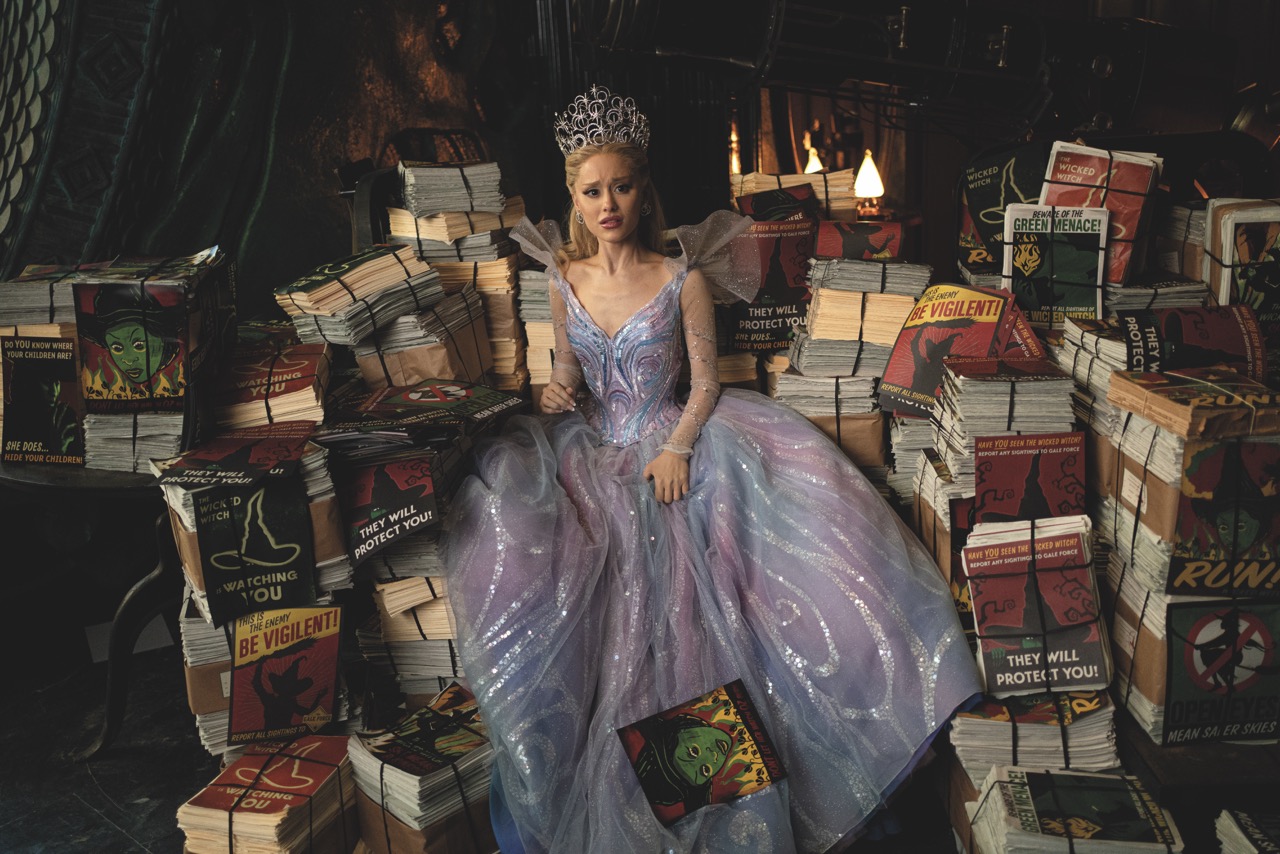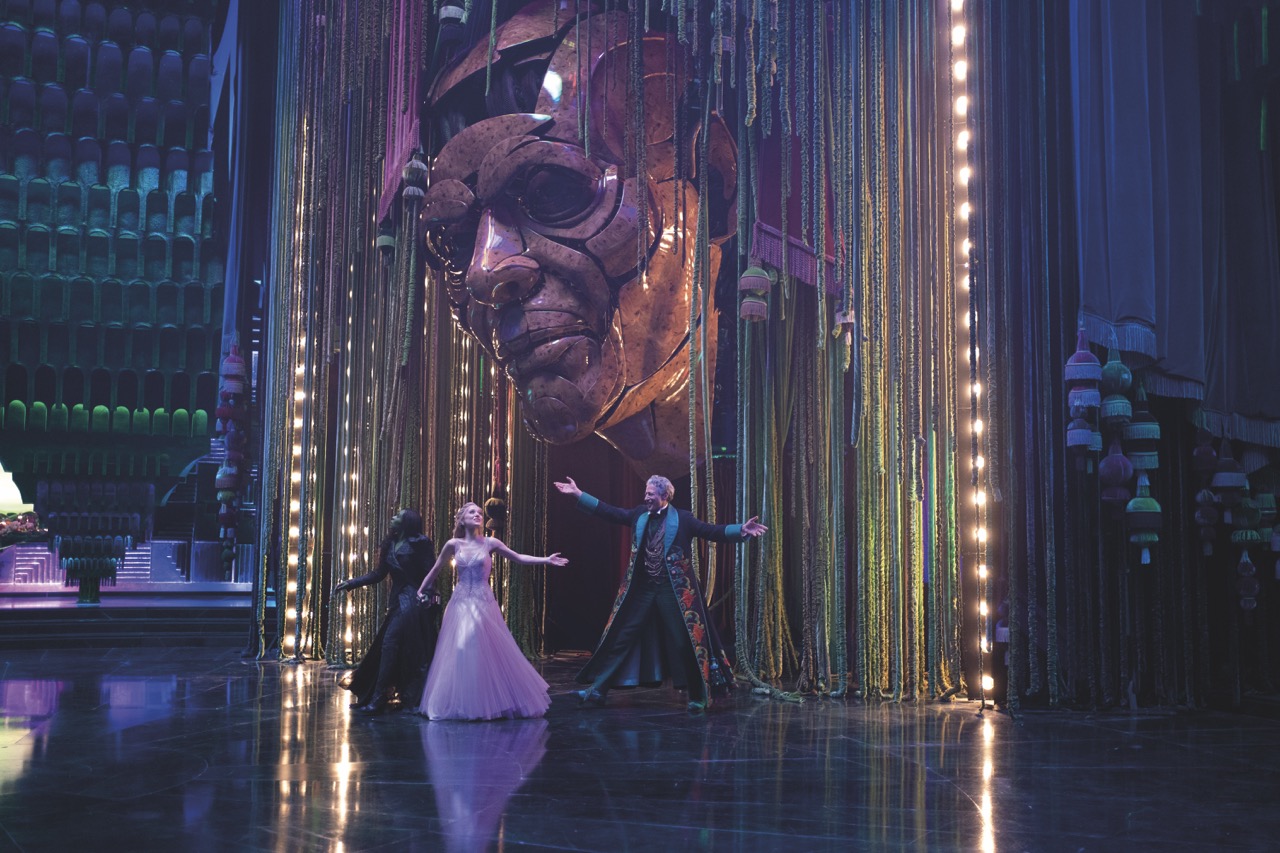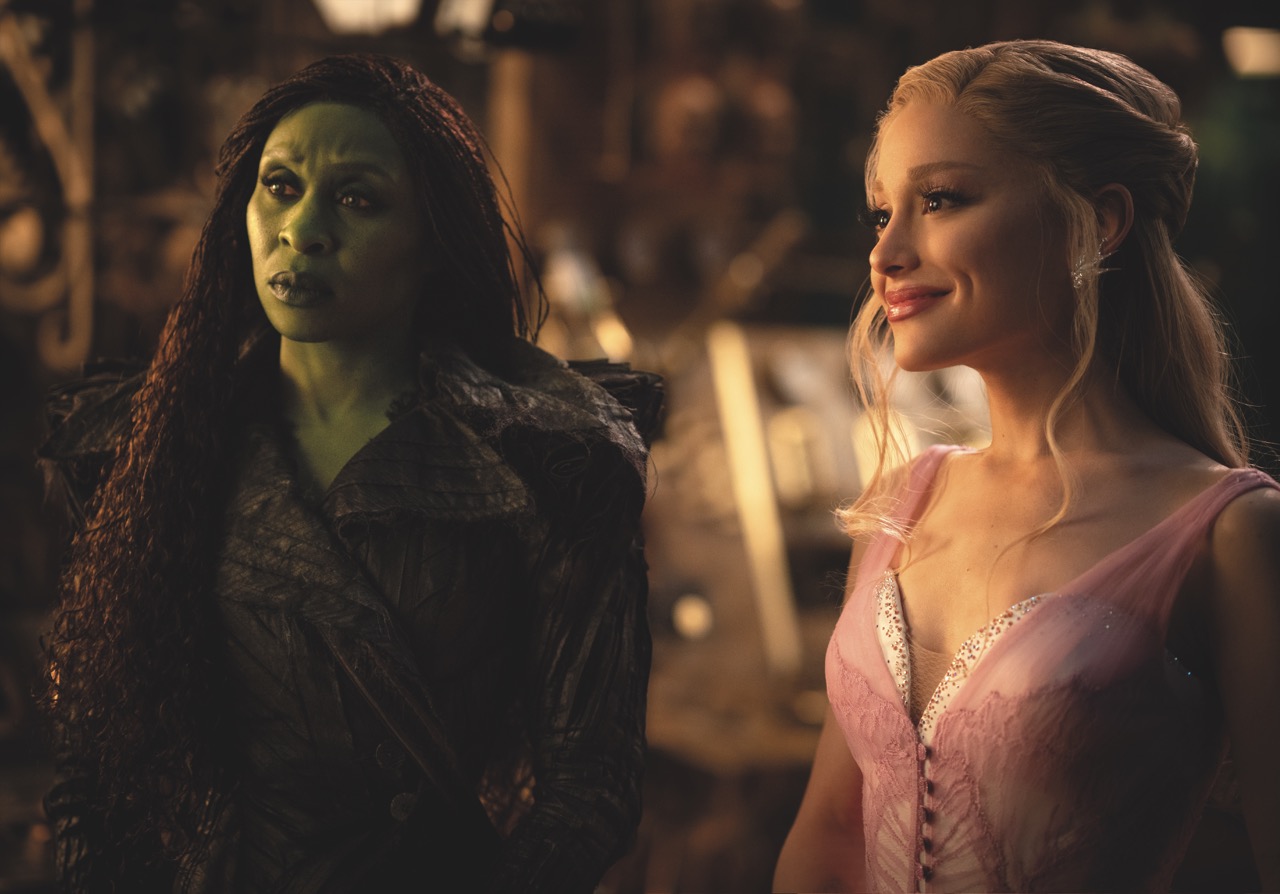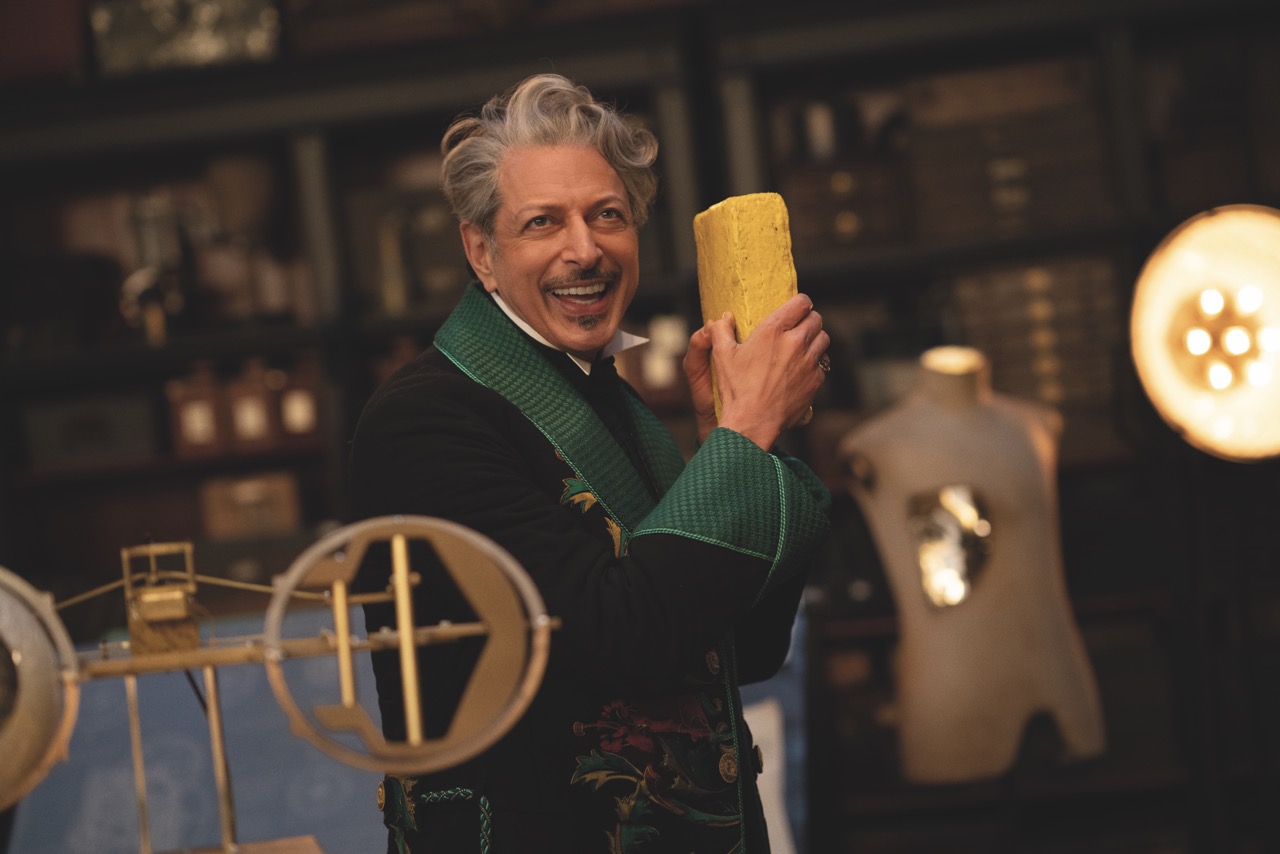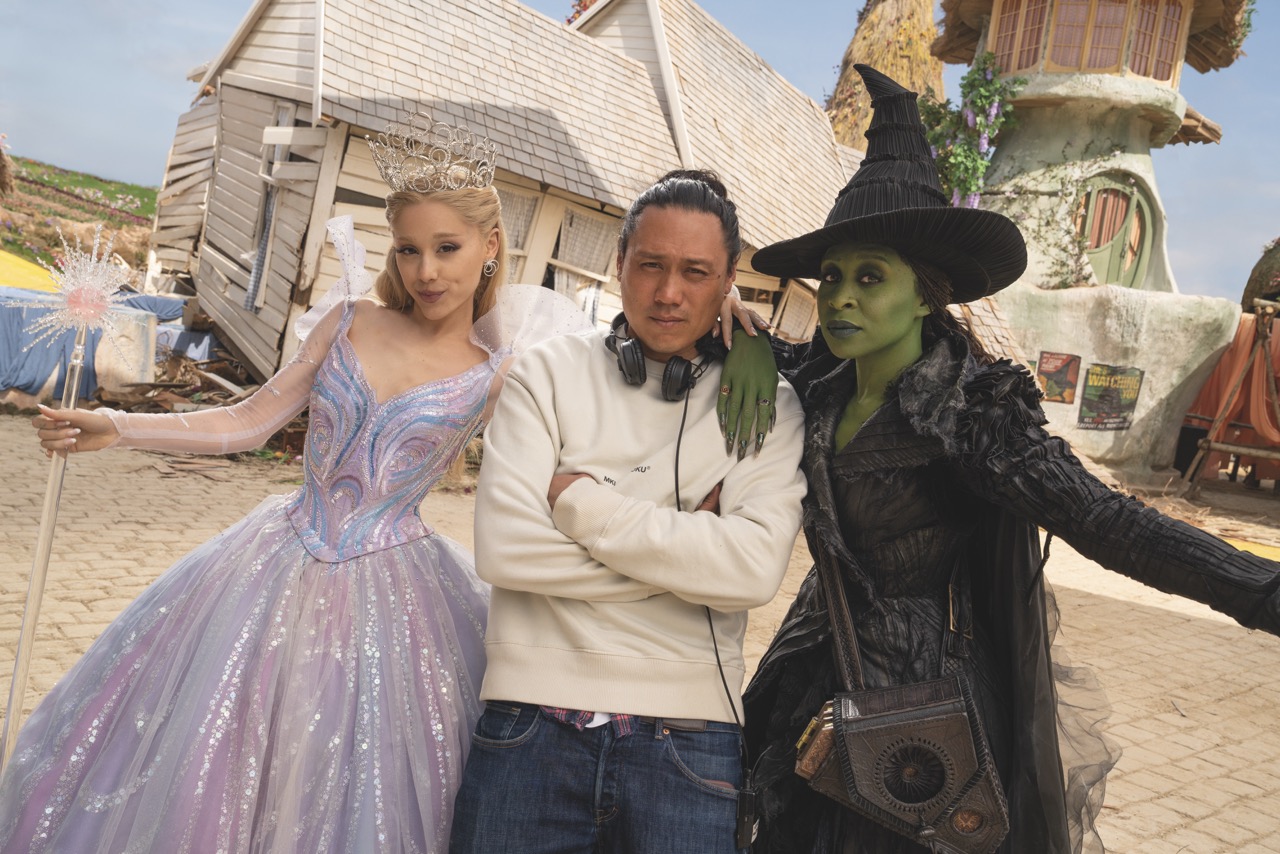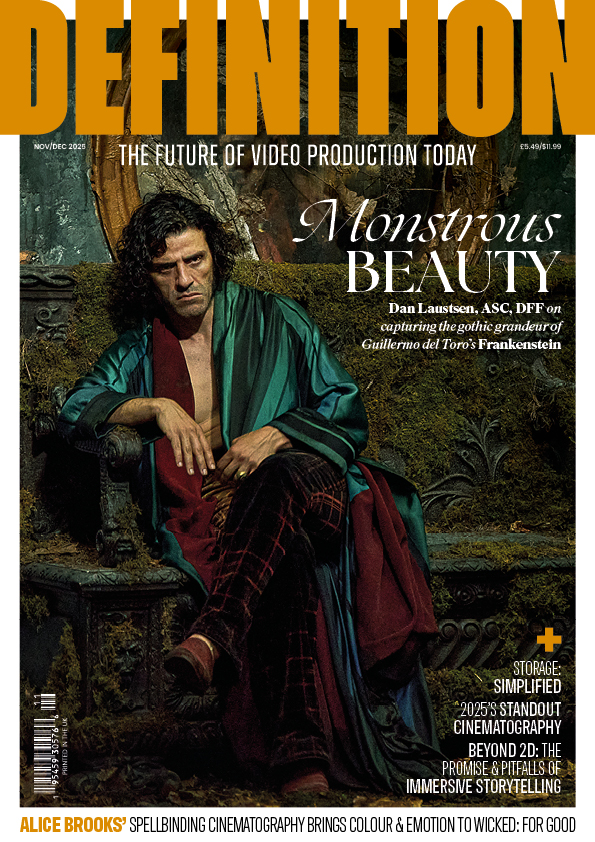
Production: Wicked: For Good
Posted on Nov 21, 2025 by Admin
DOP Alice Brooks, ASC talks colour theory & creative intent on Wicked and Wicked: For Good
Words Katie Kasperson | Images Universal Pictures
Pink and green: these complementary colours have come to represent Jon M Chu’s two-part adaptation of Wicked, itself the result of a long stream of adaptations of L Frank Baum’s 1900 novel, The Wonderful Wizard of Oz. Charting the origin story of Elphaba, the so-called Wicked Witch of the West, and Glinda the Good, Chu’s Wicked (2024) and Wicked: For Good (2025) tell a tale of friendship, social ostracism and self-fulfilling prophecies – often through song and dance.
Alice Brooks, ASC took the reins for the cinematography on both films, having previously worked with Chu on In the Heights (2021), another film adaptation of a Broadway musical. Friends for nearly 25 years, Brooks and Chu began planning Wicked and Wicked: For Good by keeping the story’s emotions front and centre.
“For movie one, these were emotions such as celebration or desire or choice, and for movie two, they were things like sacrifice and separation and consequence,” she explains. “As our discussions deepened, we quickly realised that the first movie would be effervescent and glowing, while the second would have more of a weight and density to it. Every lighting cue, every lens choice, every movement is rooted in these emotional intentions.”
Mapping two movies
After establishing the story’s emotional beats, Brooks parsed thousands of images, creating a moodboard that featured everything from Instagram photos to stills from classic movies like The Empire Strikes Back. “It was all over the place,” she admits. “The next process was to create a colour script – a hand-painted drawing for each sequence in the movie – or sometimes a few if things tonally shifted,” Brooks continues. “I picked one photograph per scene and put them up on the wall in sequential order. When I stepped back and softened my gaze, I could see where we were light and dark. I could see the entire arc of both movies as one whole.”
Brooks and Chu took two years – plus an additional 18 weeks, officially – to prep the Wicked films. “I had a crew of over 200 people, and we shot on 73 sets, 17 sound stages, four backlots and three locations: a huge scope of things to keep track of,” she admits. To keep everyone organised and on schedule, “my team would create weekly packets that included, at a glance, the emotional intentions, colour script, script pages, shot list and storyboards.”
To map out the more complex sequences, such as the films’ combined total of 26 musical numbers, Brooks and Chu would “shoot video of dance rehearsals and then cut them together from our iPhone footage,” she describes. Those too were included in the weekly plan packets.
Colour-coded
When production rolled around, the team had nine months to shoot two movies. Filming at Sky Studios in London, Brooks used an ARRI ALEXA 65, Panavision prototype anamorphic lenses as well as thousands of lights – including Cineo Quantum IIs – provided by Universal Production Services.
Again, colour guided the production design from costumes and set-builds to Brooks’ careful lighting choices. “Colour has always meant something in Oz, from the original L. Frank Baum books to The Wizard of Oz and Wicked. In the books, every single paragraph has a rich, poetic colour description. For me, the poeticism was what I was really leaning into.”
Brooks lit every scene in a different shade, assigning meaning to each one. “For instance, red meant wrong choices,” she shares. “You see it in the governor’s mansion and during the scene between Elphaba’s mom and her lover. In the second movie, you see it in her sister’s suite, when her shoes begin to glow. I used orange for Elphaba’s transformation,” she continues, “and in the second film, you see it in No Good Deed. In For Good, we used real flame and torchlight with this beautiful glow to it. There’s a scene called ‘the Melting of the Wicked Witch’, which is also orange.”
Yellow corresponds to Glinda’s intuition, appearing when she creates the yellow brick road and, in For Good, during her wedding to Fiyero and the final scene. Pink stands for popularity, while blue is the colour of love between Elphaba and Glinda, according to Brooks. “Colour tells you what isn’t necessarily spoken.”
As for lensing, Brooks chose a 65mm anamorphic for Elphaba, played by a painted-green Cynthia Erivo, and a 75mm for Glinda, played by a platinum blonde Ariana Grande. “I found Cynthia’s lens first during a camera test. But when I put it on Ari, it didn’t quite fit with her more bubbly personality. They are incredibly different characters.”
In Wicked, Elphaba and Glinda often appear in the same frame, while in For Good, “they are together very little,” Brooks reveals. “In the first film, we created these beautiful, symmetrical shots. In the second movie, Glinda’s world is refined and elegant and very much like an old MGM musical. Round images encompass her.” Meanwhile, for Elphaba, “we shot her handheld so she’s raw and real and textured. We do these extreme close-ups on her that we didn’t do in the first movie. The dichotomy of their two worlds quickly became part of our camera language.”
Practical magic
Sticking to their roots as stage musicals, Wicked and Wicked: For Good were both primarily filmed practically. “All our sets were real, built and tangible. We had very little blue screen,” Brooks details. “When Elphaba is flying we used blue screen, but on our biggest stage she’s on wires and tuning forks and our Technocrane is spinning around her. We captured all those movements in camera.”
In both films, animals play an essential role. Many are professors at Shiz University, where Elphaba, Glinda and Fiyero attend school. And, like in The Wizard of Oz, flying monkeys accompany Elphaba in For Good. “With the animals,” begins Brooks, “we had people in grey suits on-set. I lit them, then VFX would make sure the lighting matched exactly. It was a seamless relationship between cinematography and visual effects.”
Two at a time
Wicked and Wicked: For Good each correspond with acts one and two from the original stage musical. In Brooks’ words, “together, the two films form a continuous visual story, but they each occupy their own world.” During production, however, “we treated it as if we were shooting one movie.”
It’s rare for a studio to greenlight multiple movies without any indication of box office performance – but it does happen (the Lord of the Rings trilogy being an example of when it’s worked out). While likely financially motivated, filming the two films back-to-back also encouraged creative continuity. “I don’t think we would have got the same look, feel – even emotional reaction we got to the first movie – had we not made those choices,” says Brooks. “I’m glad we did. I’m so proud of both movies.”
While Wicked: For Good is tonally different from Wicked, according to Brooks, “there is a visual heartbeat that intricately weaves the two movies into one. When you step back and look at both films as a whole, every intention is clear, vibrant and beautiful.”
This story appears in the November/December 2025 issue of Definition


